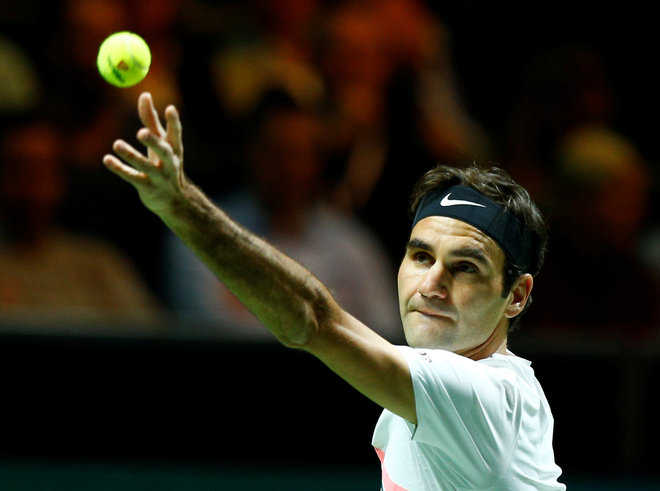
Roger Federer of Switzerland.
Rohit Mahajan
He combines artistry and power like no other tennis player. He’s got remarkable numbers, and yet Roger Federer continues to amaze. Becoming the world No. 1 in such a competitive sport at 36 is unbelievable.
Watching Federer live is an amazing experience — live, the show is better than TV because the dimensions of the court and speed of the movement of the players are more evident. Federer’s footwork is graceful and easy on the eye; he doesn’t grunt, unlike the power-hitters, because he’s not using his full power on every stroke — he has subtler methods. This shows even in photographs — Federer’s expression while hitting the ball is calm, as if he’s gazing at a painting, while the facial expressions of others show wide eyes, grimaces and open mouths due to the power they’re using. Unlike the likes of Rafael Nadal, who play with raw power, Federer’s methods are more pleasing to the eye — he’s the best touch player of our times. He wins points with power, but also with fine volleys, angles, drop shots, and intelligent placement. A father of four kids, he cries at the mere sight of his children after winning a tournament!
Is he real?
After he won the Australian Open last month, former champion Christ Evert wrote on social media: “Nobody makes me cry like Roger Federer ... No one ... There is no one like him.”
Why would he make a great player from the 1970s and 1980s cry? Why does everyone love him so much? Surely, it can’t be merely due to the beauty of his game?
Is Federer for real? A lot of people who don’t like him — mostly fans of other greats like Nadal and Novak Djokovic — think he’s unreal. They believe that his knack of always saying the right thing, always supporting the right cause, is an elaborate charade; they believe that he’s a wily man who nurtures a noble image of himself to be liked, or to remain attractive commercially for sponsors as a role model who can help sell stuff to people.
That all may well be true — after all, who doesn’t like to be liked? But his peers, people he meets and plays with, the men who share the locker room with him, seem to think that he’s a nice guy. Over the last 14 tennis seasons, 13 times he’s been voted by his fellow ATP Tour players for the Stefan Edberg Sportsmanship Award, given to a player who “conducted himself at the highest level of professionalism and integrity, who competed with his fellow players with the utmost spirit of fairness”. In other words, people who know him and meet him believe that despite being arguably the greatest player of all time, he remains a very nice guy. And if you’re a tennis fan — which is distinct from being the fan of a particular player — it’s a good idea to watch him live, even if only once. Luckily, he’s providing us opportunities of seeing him at his best even at 36.
The Artiste player
Federer plays power tennis with the artistry of a wooden racquet player. This point needs some elaboration. When wooden racquets were replaced by graphite racquets in the 1980s, it wiped out the ‘artistes’ among tennis players. The graphite racquets are lighter and easier to swing, the strings used in these help generate more power and spin. This led to a great change in tennis — players are able to hit the ball so powerfully that they can win points from even behind the baseline. This has changed tennis irrevocably: A player’s movements have become limited. The modern power-hitters move from one end of the baseline to the other, hitting very powerful shots and winners right from there. They’re extremely athletic also, so they’re able to sprint forward and backward too, but their basic movement involves moving sideways at/behind the baseline.
The last great artistes of tennis were men such as Miloslav Mecir, John McEnroe, or Stefan Edberg, who grew up playing with wooden racquets — this gave them the subtlety of handwork, allowing them to angle, place, drop and volley the ball from mid-court and closer to the net.
Federer, though he grew up playing with a graphite racquet, plays like the artists of old; there are few such left, and no other has won a Grand Slam in recent memory.



























